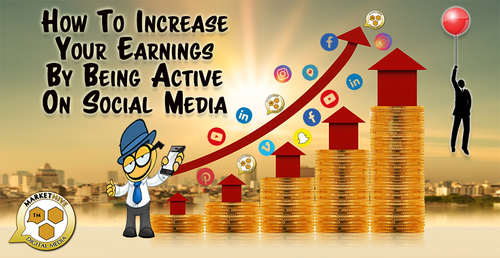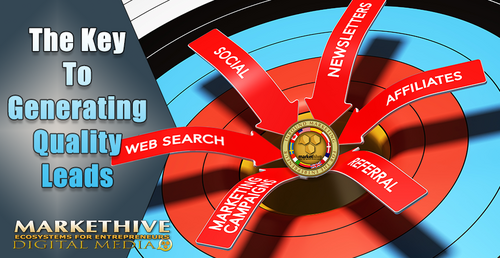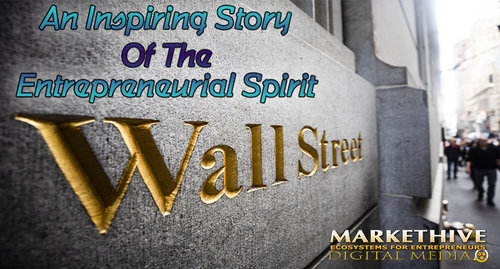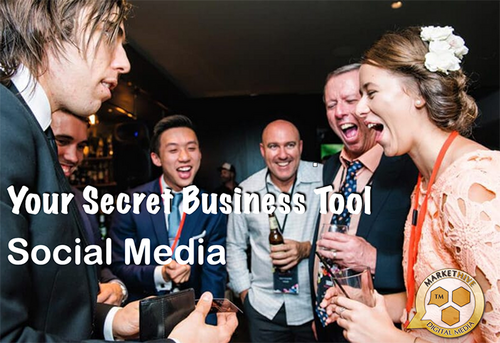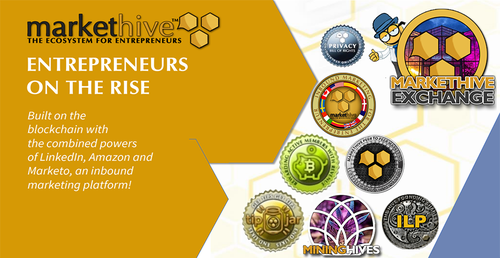FORCE MULTIPLIERS IN MARKETING AND SOCIAL MEDIA

Entrepreneurs face many challenges that can make it difficult for their businesses to survive and prosper year after year. As is commonplace, the problem is how to use the limited resources available to you, be it time or money, for maximum impact and profit. These issues are addressed when force multipliers come into play. What are they, and how important are they?
It was the military who recognized that force multipliers were a critical element long ago. One example is a troop multiplier adds something to an existing military capability, making it more potent by increasing its size, or machine guns are a force multiplier for rifles.
Another example is the military would incorporate sniper training into all topics designed to increase snipers' value as a multiplier of the armed forces and ensure their survival on the battlefield.
Force multipliers are defined as something that allows you to achieve more with the same or less effort than when you switch from a screwdriver to a drill; force multipliers can be critical to the business's survival.
What Are Force Multipliers In The Online World?
The force multipliers are strategies, tactics, tools, software, and things that could give you an advantage and make your business more competitive than what you are already doing.
Force multipliers allowed me to grow exponentially and to reach an outcome that I could not have achieved in other ways. A force multiplier will enable you to scale quickly and efficiently and gain opportunities that you could not otherwise be able to.
They are synergistic and have a dramatic force multiplication; they positively impact the company, its customers, and the economy on the whole. A small force becomes a force multiplier because it gives you an unfair advantage over a larger, more entrenched competitor with a similar business model.

Image courtesy of Dan Seaman – Markethive Entrepreneur 1
It is corresponding to the military, especially when it comes to unfair advantages. You add night vision equipment to a carefully selected, highly trained group of soldiers, and you have a dramatic increase in forces.
In the military definition above, the focus is on adding a capability. Markethive's focus is on adding processes because we want the sum of the marketing parts to cohesively come together and be larger than the whole marketing effort. In most other organizations, force multipliers are mainly operational to improve store operations or manufacturing productivity.
Force multipliers in marketing begin with strategy and process. Today's marketers must create new strategies because we all know the marketing landscape has evolved and changed dramatically, equally impacting retailers and brands. Linear thinking is doing business in the foregone era of yesterday. Force multipliers explode the myth of linear thinking to allow marketing teams and companies to keep up with the pace of change.
Every brand needs a Force Multiplier if it wants to see growth. The challenge is finding the right force multipliers to apply to your business.
The marketplace continues to change, and the change is constant. There is no end to the shift messengers affecting the marketplace. It suggests the urgency for identifying the force multipliers that can drive your brands' growth. They need to be identified and cultivated. Mentioned below are seven force multipliers;
Sharing Info And Content On Social Networks
The ability to do this with the speed and interactivity of sharing on many social media platforms is a vital force multiplier. The broadcasting capabilities and interconnectivity of various social media platforms available to Markethive entrepreneurs allow for exponential reach. They are working in synergy with the Markethive social media platform for a more customized, personal, and interactive collaboration.
User-generated Content Attracting Feedback and Reviews
The ability to make user-generated content available to other users immediately is a positive force multiplier. However, the ability to generate online feedback and ratings can also be an opposing force multiplier if, as an entrepreneur, you are not attentive or decide to question your customers' view of reality. Be vigilant and empathic to your audience.
Blockchain – A Force Multiplier
Blockchain and smart contracts are new ways and have been developed to reward and influence people who participate in crowdsourcing at a low cost. Crowdsourcing funding for concepts allows entrepreneurs to bypass professional investors and venture capitalists to obtain the financing of efforts to enable new platforms to meet the users' needs. The Incentivized Loan Program (ILP) is a perfect example.
Cryptocurrency is used as a micropayment to reward users' for activities. Also, loyalty and bounty programs with gamification make for a fun and lucrative environment that is not only a force multiplier but a game-changer.
Storefronts and Campaigns
Markethive's storefronts and marketing campaigns associated with any given storefront a Markethive entrepreneur creates is a superior force multiplier. Within the storefronts/groups, we have integrated broadcasting to the entire group members' social network accounts facilitated by the group administrator.
Blogging systems that empower the team, management reports for the admin showing each member's actions within the system (like blogging, autoresponder production, capture pages, posting to the news feed, running ads, sponsoring new members). A group rotator to share the results of the traffic generated by the group, and a co-op's ability to raise funds and shares for group ad campaigns.
Advocates Should Be Nurtured
Advocates are a valuable force multiplier. These dedicated fans and partners believe in your brand, cause, or product so much that they do the hard work for free. These supporters become influencers for many undecided people, talk to them, and see them as a step forward in customer loyalty and engagement.
Situation Awareness And Network Connectivity
Another powerful force multiplier allows your company or business to be proactive to crucial changes and act before everyone else does. What it means is that your network has the right people and groups listening to the correct information at the right time and place so that you can make quick, informed decisions. It improves your awareness of the situation in real-time – time for decisions and is an essential part of your marketing strategy.
Pre-empt Immediate Future Changes
Competent predictions of the future are the supreme force multiplier, and most companies are still considered laggards in using analytics and data intelligence. Law enforcement agencies already use predictive hot spots to predict security emergencies and health-care authorities to forecast needs.
Any network needs to take advantage of trends and directions. Predictive analytics, such as analytics for anticipating short-term and long-term change, is an effective way to identify trends and demands at all times. It is the epitome of an innovative culture.
Expand With Force Multipliers
Suppose you want to expand but only reach one customer at a time or one market or partnership. In that case, you will never grow fast enough to be competitive, particularly against the larger players with complete infrastructure in the market. Force Multipliers allows you to grow, scale-up, and achieve opportunities that you would not otherwise be able to facilitate.
Businesses and marketers must continuously look for forces that can multiply the impact of productivity. We have limited resources and time, and we have to use the right multiplier for each element.

Enter Markethive
Let's break down the name – Markethive;
"Market" represents a robust portfolio of integrated and useful inbound marketing tools, like email autoresponders, social media broadcasters, capture pages, blogging platforms, SEO platforms, lead management, and analytics.
"Hive" represents the social network found within the system. It is a new type of social network called a Social Neural Network. This "Hive" concept gives massive leverage to campaigns, easily managed, and extremely powerful.
Regardless of your level of drive, Markethive will add to your agenda, broaden your reach, build your sphere of influence further and more significantly than anything before has even attempted to do.
Markethive is a combination of LinkedIn, Facebook, Marketo, and Fiverr and it is free. Driven by Blockchain technology, you have a full suite of powerful Inbound Marketing systems integrated into an intuitive social network that pays you to participate!
The cottage industry is alive and well within Markethive, generating many cottage businesses as individual entrepreneurs. There are the money machines like BIX, built by Markethive to allow any associate of Markethive to utilize and prosper within the Markethive system.
There are many more money-making platforms to be integrated into the system in due course. These hubs and portals are other forms and can also be identified as force multipliers.

There are upgrades like any other platform (The Entrepreneur One Upgrade, with more entry levels to come); however, you have the essential tools required for inbound marketing as a free member. Also, a place in our social network, plus you will be paid for all your activity on the platform once you refer three of your colleagues or friends to markethive.
We have here the world's first entrepreneur business person's social network, with the entire system offered predominantly for free to the whole worldwide market of entrepreneurs.
That includes small businesses, local businesses, regional businesses, global businesses, cottage industries, real estate agents, mortgage brokers, insurance agents, affiliate marketers, software innovators, musicians, churches, political platforms, political candidates, distributors, network marketers, innovators, and dreamers!
Save money, eliminate your Internet marketing costs, increase your reach, grow your market, and make money with Markethive, the Social Market Broadcasting Network – The Force Multiplier.


Written by Deb Williams
Chief Editor and writer for Markethive.com, the social, market, broadcasting network. An avid supporter of blockchain technology and cryptocurrency. I thrive on progress and champion freedom of speech and sovereignty. I embrace "Change" with a passion, and my purpose in life is to enlighten people en masse, accept and move forward with enthusiasm.






